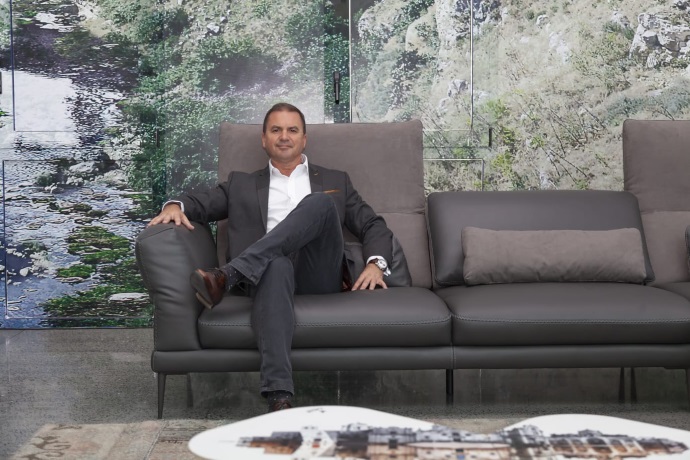
The furniture industry has been in a race toward the bottom for the past 15 years, but there are some trends coming that could turn things around for the industry, writes Steve Layton.
What does a race to the bottom mean? It means lower prices and usually lower quality. Smaller margins that puts pressure on business’ bottom lines and then a downturn in customer service. In the end, no one wins.
Over the past 10-15 years there’s been a significant downward swing on price tags in the furniture industry and, correspondingly, very little upward movement in terms of quality. The truth is, most brands aren’t making any money and consumers now have less choice of quality items than they did just a decade ago.
The big drop in furniture prices isn’t something to cheer about, even from a consumer perspective. When the retail prices aren’t conducive to making margins, it forces factories to reduce their prices to a point where they can’t go any lower. It’s not sustainable. For example, there are now three or four major retail chains where there is no point of difference, what was once a selection of furniture options has morphed into the same furniture store. What they sell is based on the lowest prices and marketing.
As one of the early pioneers in developing China’s production and export of furniture to Australia, the USA and Europe, I’ve worked with most of the large furniture retailers over the past 30 years and witnessed first-hand the changing face of the industry.
We have seen lots of casualties in the discount wars. Smaller retailers have been swallowed up by bigger brands so that approximately six groups control the industry now. This partly accounts for why about 90% of all manufacturing occurs offshore in China. There’s nothing wrong with sourcing from China – my business The Layton Group has been in that business for three decades – but because of the consolidation of furniture businesses, diversity in stock and stock quality has suffered for many retailers and the biggest losers are the consumers.
Necessity is the mother of invention
While some businesses have keeled over, a few have started to turn things around through innovation. The ‘in-a-box’ trend, where bulky items such as mattresses and sofas are stuffed into a much smaller box for easier delivery and better manoeuvrability has certainly disrupted the industry. That’s thanks to materials such as memory foam, which has also enabled the increasingly common ‘try it for X nights’ guarantee, removing some of the risk from the purchase.
The idea for my recently launched business, Sofa Brands, came from a place of frustration that in the race to the bottom. I asked: What if we could increase the availability of high quality furniture in Australia? What if we could leverage off the huge volumes that we are doing in China and pass those savings on to the Australian consumer and give them access to quality Italian heritage sofas at amazing prices? And that is what we have done.
Trends to watch
30 years ago the average Australian would’ve looked for traditional style furniture that would serve them for life, something that might get reupholstered from time to time but with a sturdy structure. But today’s households seem to prefer a more fashionable approach to buying furniture as a commoditised product.
Fashionability also means designs turn over a lot quicker, particularly with indoor furniture. Brands will try a model and if it doesn’t work, it is replaced three months later. This shortens development lead times but also introduces a lot more flexibility when it comes to changing a range.
A better way
One of the reasons why online furniture retailers have largely failed to disrupt bricks and mortar stores that have sales on big pieces like leather sectionals and theatre lounges, is availability and logistics. Today consumers now expect quicker delivery. A decade ago they were satisfied waiting 20+ weeks for a promotional product to be delivered to them, but now it is price driven and they expect it to be delivered within a week, or sometimes 24 hours!
Stores that can offer quick delivery because they have product available immediately can use this in their selling proposition but boutique and custom-made furniture have the opposite issue because it's too hard to turn around an item and ship it quickly. However, the furniture can be tailored – any colour, any configuration, any design – so the consumer knows that their made-to-order purchase is totally unique.
Furniture brands used to stand for quality, and process and history. My business has been advocating having a quality product that you can take pride in, and better marketing differentiation rather than a simplistic war on price. And it has really resonated with customers, retailers, suppliers, and furniture designers.
A piece of furniture should be an investment that lasts above and beyond any warranty. The industry needs to stop pretending a sofa is a ‘fast fashion’ item people have in their homes for a little while, and lift the quality of its stock, so it can lift its game.
As this starts to happen and it merges with today’s conveniences everyone, the industry and the consumers, will start winning again.
About the author
Steve Layton is the CEO and founder of Sofa Brands http://sofabrands.com.au/, and a longstanding key player in the Australian furniture industry. Sofa Brands brings heritage Italian-made and designed Calia Italia and Nicoletti Home sofas and upholstery to Australia and New Zealand for consumers to purchase at as little as one-third of the price of a typical Italian-made, top-of-the-range sofa. All without diminishing the quality of the models, which are backed up by a lifetime warranty on frames and a five-year warranty on leather, foam and fabrics. It is anticipated that the brands will be available in select partner stores and market places in Australia and New Zealand by the end of 2018.
| < Prev | Next > |
|---|





